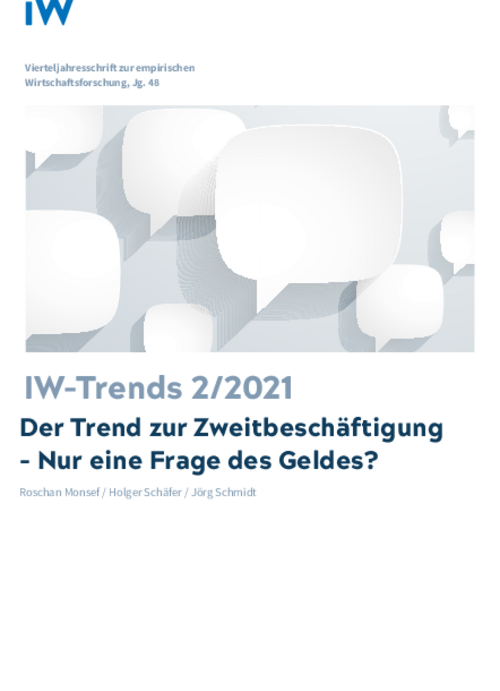In recent years, an increasing number of dependent employees have become multiple jobholders.

The Trend Towards Second Jobs – Just a Question of Money?

In recent years, an increasing number of dependent employees have become multiple jobholders.
This study investigates whether such secondary employment is primarily pursued to avoid social hardship. An empirical analysis shows that the motives of multiple jobholders differ significantly according to whether their ‘moonlighting’ involves dependent or self-employment. 41 per cent of employees who are self-employed in their side jobs have a university degree, a proportion significantly higher than the one among single jobholders and those working for more than one employer. Moreover, their main income tends to be above average. For employee multiple jobholders, on the other hand, financial factors are likely to play a key role. Not only is their gross hourly wage in their main job likely to be lower than that of single jobholders but their primary employment is also considerably more likely to be part-time. However, the total household income of employee multiple jobholders, including income from side jobs, does not differ significantly from that of single jobholders. Further analyses show that employees with lower main income are more likely to be holding down multiple jobs, even under otherwise equal conditions. However, this does not apply if income from secondary employment is also taken into account. Labour policy which made secondary employment less attractive, for example by raising the tax and insurance burdens for limited-hour contracts, could therefore increase the risk of poverty for those whose earning potential in their main job is limited.

The Trend Towards Second Jobs – Just a Question of Money?

More on the topic

German Wage Policy between Inflation and Stagnation: Are Conflicts with the Aims of Monetary Policy Looming?
After the economic and financial crisis of 2008/9, the German labour market soon began to recover, creating scope for a comparatively expansive wage policy.
IW
Orphaned executive chairs in German companies
In 2023, half of the companies in Germany reported increasing problems in filling vacancies for management positions because employees are not aiming for a career. Larger companies are less affected than small companies.
IW